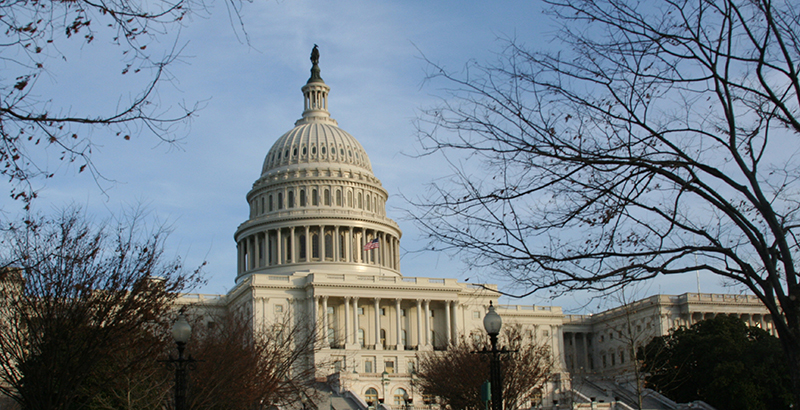Facing a ‘Really Big Issue,’ Senators Push for First Federal Survey of the Condition of U.S. Schools Since 1995

Senators added language to the pending U.S. Education Department spending bill that would require the nonpartisan Government Accountability Office to study the state of America’s outdated school facilities for the first time since 1995.
The bipartisan amendment, sponsored Thursday by Democrats Jack Reed of Rhode Island and Sherrod Brown of Ohio, and Republican Lisa Murkowski of Alaska, would require the GAO to study 10 specific areas, including heating and air conditioning, the presence of contaminants like lead and asbestos, and compliance with the Americans with Disabilities Act. The report would be due 18 months after the bill takes effect.
“We need clean, healthy, well-equipped schools in order for this generation to meet the challenges of the future: social, environmental, economic, and global. It’s the right thing to do and it will lead to success for us as individuals and communities and help us remain leaders in the world,” Reed said in January when touting separate legislation he proposed to put $200 billion into school facilities.
Reed, Murkowski, Brown and other Senate Democrats also wrote to President Trump earlier this year encouraging him to partner with states to improve facilities. Trump’s $1.5 trillion infrastructure incentive plan, released in February, didn’t include schools.
Serious problems with the fitness of America’s aging school buildings have made national headlines recently, from broken heaters in Baltimore that forced freezing young children to wear coats indoors to students being exposed to dangerous level of asbestos and lead in Philadelphia schools to teachers in Detroit staging mass sick-outs to protest their crumbling, sometimes vermin-infested schools.
“It’s actually a really big issue. It’s the second biggest public infrastructure after highways, but because it’s done so locally, there’s sort of a lack of appreciation of the scale of the issues and the problem,” said Mary Filardo, executive director of the 21st Century School Foundation, a group that aims to improve public school facilities.
A2017 report by the American Society of Civil Engineers found that more than half of schools would need to make repairs, renovations or modernizations to be considered in “good” condition, and 24 percent of American schools were rated as being in “fair” or “poor” condition overall. The country is spending about $38 billion less every year on school buildings than it should, the group said.
The 1995 GAO report found that about one-third of American schools, educating 14 million students, needed “extensive repairs” that would cost about $65 billion. A total of $112 billion was needed to restore all school facilities “to good overall condition and to comply with federal mandates.”
Unlike overall education spending, which breaks down to about 45 percent each from districts and states, and 10 percent from the federal government, 82 percent of school facilities spending comes from local school district revenue, and their ability to pay can vary wildly, Filardo said.
The federal government has funded school construction in the distant past, through the Depression-era Works Progress Administration, which built 5,900 schools, and the National Defense Education Act in the 1950s, which encouraged schools to beef up science programs so they could keep up in the space race. But an effort to include infrastructure dollars in the 2009 stimulus was stripped from the final bill, and the largest federal funding of school facilities now is post-disaster aid provided by FEMA, she said, meaning a school would have to be damaged or destroyed first.
“[Federal funding for school facilities] hasn’t been in there, largely because of thinking that it’s a local responsibility, but that’s partly why facilities are so inequitable,” Filardo said.
The appropriations bill, which passed Thursday evening, still must be reconciled with a pending House version. Current funding runs out Sept. 30.
Other K-12 education amendments added to the bill include:
● $1 million in grants to promote tele-health services in rural schools for student mental health needs
● $10 million for a pilot program to partner colleges and schools to train more mental health professionals
● Requiring a report on how the Education Department is working with NASA and the National Science Foundation to advance STEM programs
● Expressing the importance of computer science
● Expressing the importance of coding, and encouraging the Education Department to award Perkins Career and Technical Education grants for coding programs
Get stories like these delivered straight to your inbox. Sign up for The 74 Newsletter

;)
